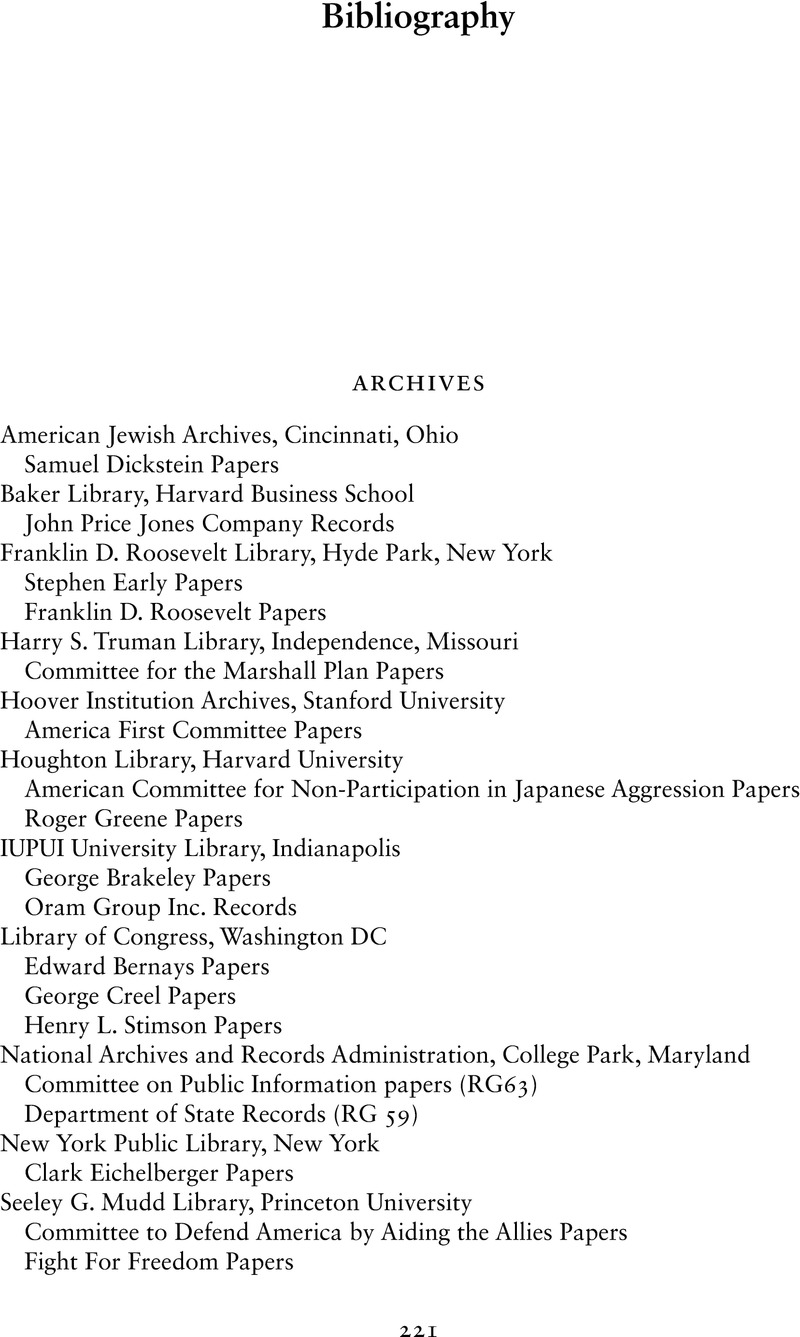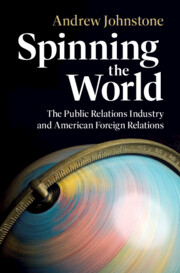Book contents
- Spinning the World
- Cambridge Studies in US Foreign Relations
- Spinning the World
- Copyright page
- Contents
- Acknowledgments
- Abbreviations
- Introduction
- 1 Progressive Origins
- 2 Defining an Industry
- 3 Conflicts of Interest
- 4 Promoting War and Peace
- 5 Shaping International Order
- 6 Aligning with Government
- 7 Developing American Business
- 8 Selling the World to America
- Epilogue
- Bibliography
- Index
- References
Bibliography
Published online by Cambridge University Press: 03 July 2025
- Spinning the World
- Cambridge Studies in US Foreign Relations
- Spinning the World
- Copyright page
- Contents
- Acknowledgments
- Abbreviations
- Introduction
- 1 Progressive Origins
- 2 Defining an Industry
- 3 Conflicts of Interest
- 4 Promoting War and Peace
- 5 Shaping International Order
- 6 Aligning with Government
- 7 Developing American Business
- 8 Selling the World to America
- Epilogue
- Bibliography
- Index
- References
Summary

Information
- Type
- Chapter
- Information
- Spinning the WorldThe Public Relations Industry and American Foreign Relations, pp. 221 - 234Publisher: Cambridge University PressPrint publication year: 2025
